Banks NPA crisis: India Inc struggles between interest cost and capital formation
Industry sector has turned out to be the major problem for banks stressed assets currently in India. This sector has demanded for lower interest cost as it effects their decision to invest in capitals.

India Inc's ability to repay their outstanding debt at the moment is low – which has resulted in banks choking with higher non-performing assets (NPA) showcasing their weak asset quality.
Stressed assets is mixture of non-performing assets (NPAs), restructured loans and written off assets. They are realized when a borrower fails to pay its principal amount of loan and interest for a of 90 days.
Higher amount of stress in banking system has arised from corporates of various sector.
Madan Sabnavis and Manisha Sachdeva economist at Care Ratings said, “There is constantly demand for lowering of interest rates by corporates as it affects the decision to invest in capital besides their financial performance.”
Industry as a whole – saw the ratio of interest to sales (cost of capital) at quite low 3.3% and varrying from less than 0.5% to 12.9%.
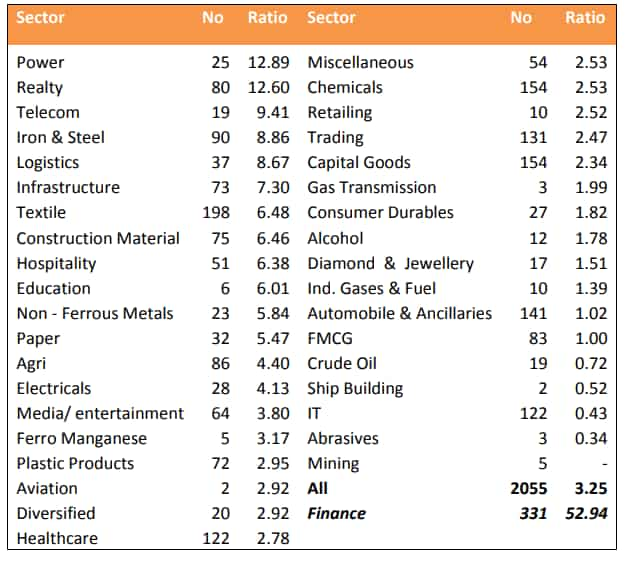
Capital intensive industries like power, realty, telecom and iron and steel have the highest ratios followed by logistics, infrastructure, textiles and construction material.
To be noted these are the industries who have also been identified by the Reserve Bank of India (RBI) to have high stressed assets. 15 of the 38 industries have an interest cost to sales ratio above the average of the sample.
Moreover, average interest cost for various industries on their outstanding borrowing – stood at 8.2% which may be compared with the current MCLR of 7.75% - 8.10% and base rate of 9 – 9.55%.
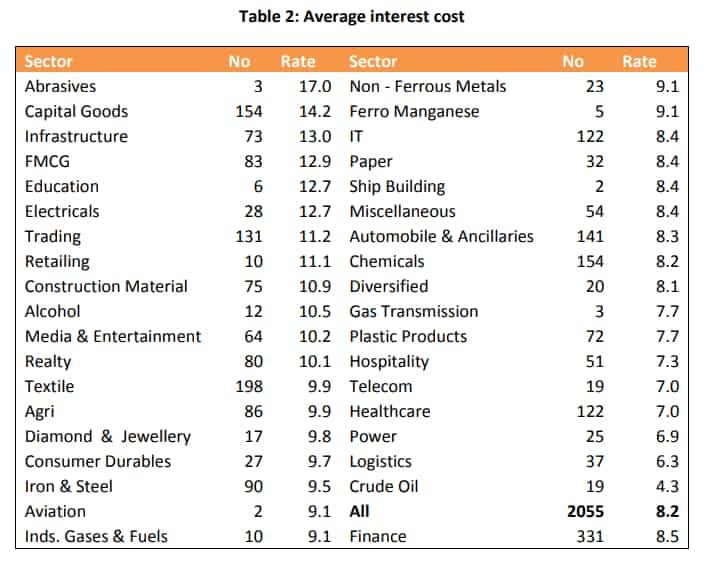
27 of the industry groups had an average interest cost of above 8.2%.
Care said, “Companies have been replacing more expensive loans with cheaper ones and have hence on an average kept the rate down.”
Such has led to increase in aggregate debt of the companies excluding finance to Rs 18.65 lakh crore in FY17 from Rs 17.73 lakh crore a year ago same fiscal.
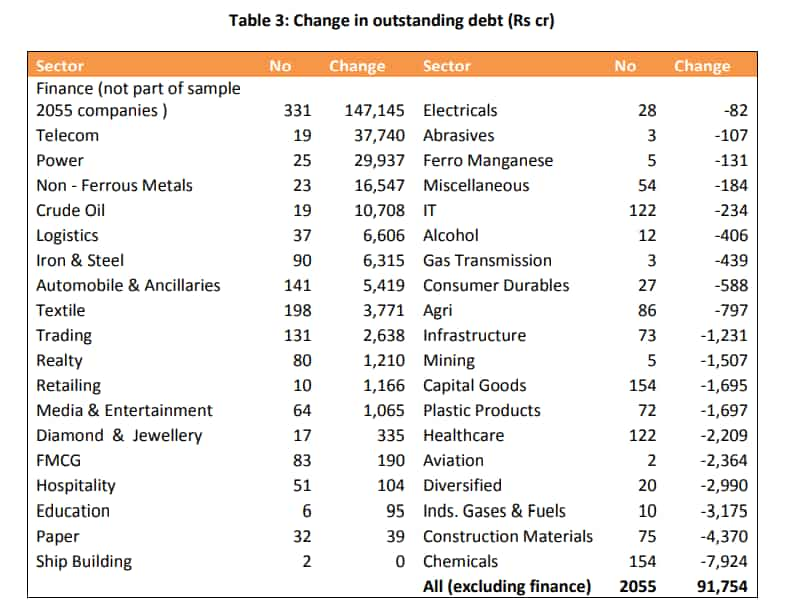
Industries with the highest share in outstanding debt in FY17 were power (19.9%), iron and steel (14.1%), crude oil (12.4%) and telecom (10.4).
These four sectors alone accounted for around 57% of total debt in the system.
Apart from these four, other sectors that had higher outstanding debt share were 4.5% for textiles, and 4.4% for both non-ferrous metals and infrastructure.
First four sectors also saw increase in their debt to Rs 10,000 crore each in FY17. While others saw more than Rs 2,000 crore each rise in their debt in FY17.
Care said, "Some of these companies have accessed the ECB market to lower their borrowing costs, while others have also borrowed in the corporate debt market where transmission of policy rates has been swift."
The highest amount of reduction in debt came from chemicals, construction material, industrial gases and aviation (not a representative sample as it consists of only 2 companies) besides the diversified group of companies.
During Q1FY18, gross NPAs of these banks in value term rose by 25.8% to Rs 3,33,605 crore compared to Rs 2,65,124 crore in the corresponding period. In percentage terms, gross NPAs which stood at 3.92% in June 2015, 6.96% in June 2016 have reached to 8.07% in June 2017.
Gross NPA ratio of PSBs are nearly 3 times that of the private banks as on June 2017. NPAs of PSBs are presently at 13.09% while that of private stood at just 4.10% by end of Q1FY18.
RBI's financial stability report showed that although there is a fall in stressed advances ratio in agriculture, services and retail sectors, the stressed advances ratio in industry sector, however, rose from 22.3% to 23%, mainly on account of sub-sectors such as cement, vehicle, mining & quarrying and basic metals.
“The stress test indicated that under the baseline scenario, the average GNPA ratio of all commercial banks may increase from 9.6% in March 2017 to 10.2% by March 2018,” added the report.
Clyton Fernandes Vice President - Institutional Research, Systematix said, "We expect asset quality issues for the sector to have continued, given the persistent weak macro-economic environment, leading to further provisioning for NPAs arising from restructured loans and for fresh slippages. Thus, we expect credit costs to remain high for most banks, though lower yoy."
Get Latest Business News, Stock Market Updates and Videos; Check your tax outgo through Income Tax Calculator and save money through our Personal Finance coverage. Check Business Breaking News Live on Zee Business Twitter and Facebook. Subscribe on YouTube.
RECOMMENDED STORIES

PPF vs SIP: With Rs 12,000 monthly investment for 30 years; which can create highest retirement corpus

Power of Compounding: How can you create Rs 5 crore, 6 crore, 7 crore corpuses if your monthly salary is Rs 20,000?
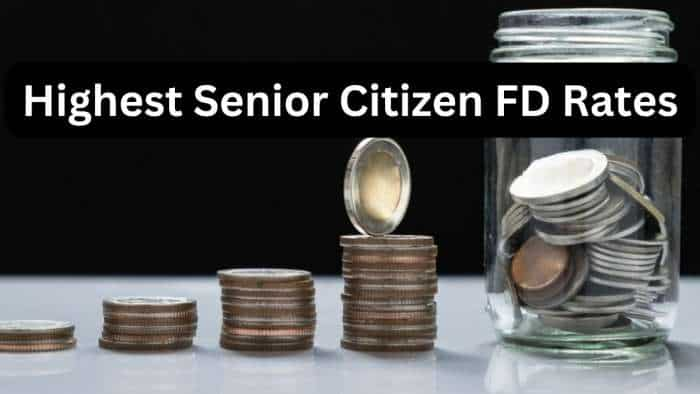
Highest Senior Citizen FD Rates: Here's what banks like SBI, PNB, BoB, Canara Bank, HDFC Bank and ICICI Bank are providing on 1-year, 3-year, 5-year fixed deposits

Small SIP, Big Impact: Rs 11,111 monthly investment for 15 years, Rs 22,222 for 10 years or Rs 33,333 for 7 years, which do you think works best?
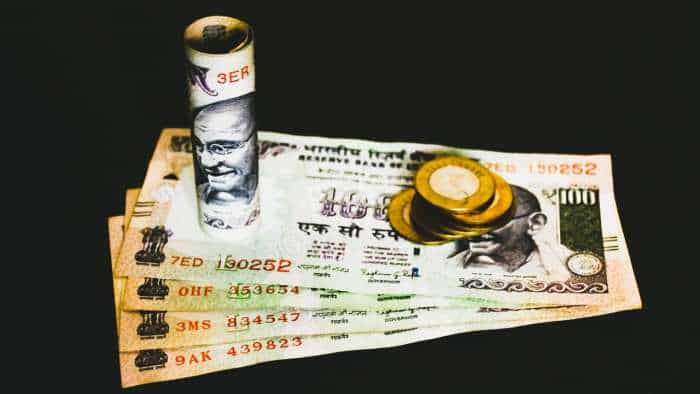
Top 7 Large and Mid Cap Mutual Funds With Highest SIP Returns in 1 Year: Rs 27,27,2 monthly SIP investment in No. 1 fund has zoomed to Rs 4,05,296
08:11 PM IST








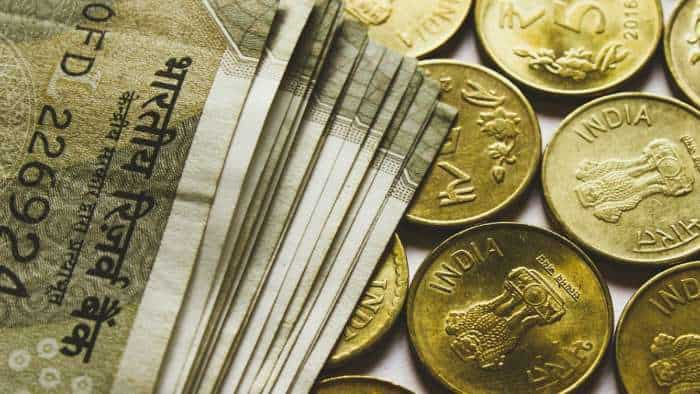

 RBI Financial Stability Report: Breather in asset quality for banks in these sectors
RBI Financial Stability Report: Breather in asset quality for banks in these sectors What is the next wisest PSU merger? These banks make for a better deal; Big lesson from BoB-Dena Bank-Vijaya Bank case
What is the next wisest PSU merger? These banks make for a better deal; Big lesson from BoB-Dena Bank-Vijaya Bank case Govt attempts for no more Nirav Modi, Vijay Mallya like cases; Be aware! The ones holding overseas citizenship
Govt attempts for no more Nirav Modi, Vijay Mallya like cases; Be aware! The ones holding overseas citizenship RBI’s new framework brings one ‘gateway’ for NPA resolution
RBI’s new framework brings one ‘gateway’ for NPA resolution IBC a helping tool for twin balance-sheet, investment crisis: Economic Survey
IBC a helping tool for twin balance-sheet, investment crisis: Economic Survey